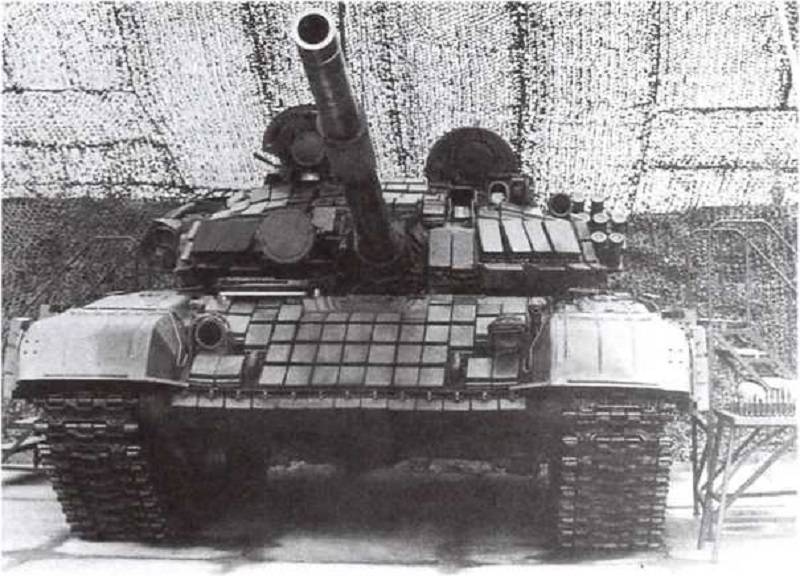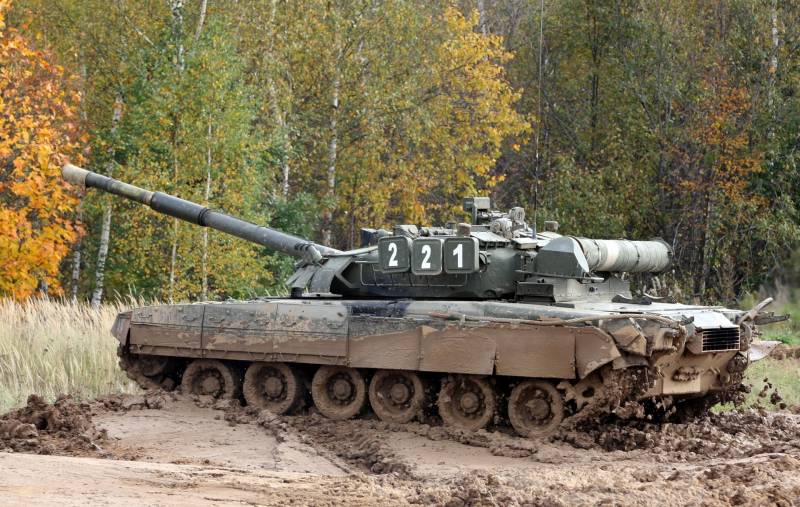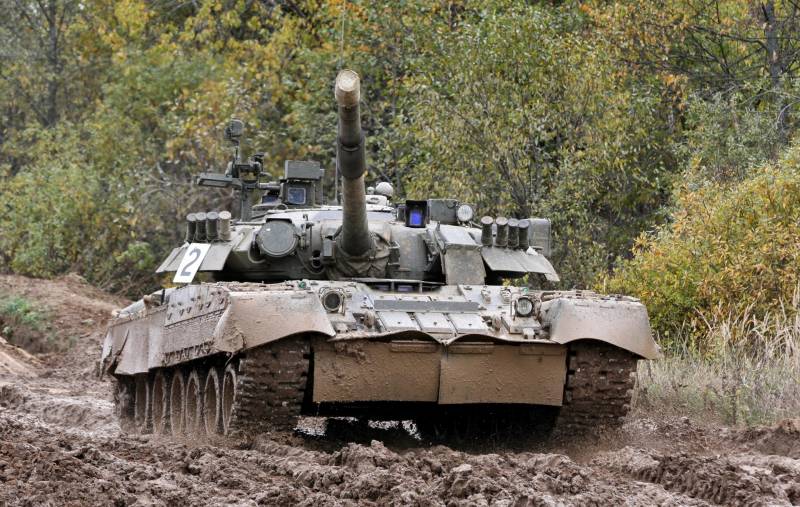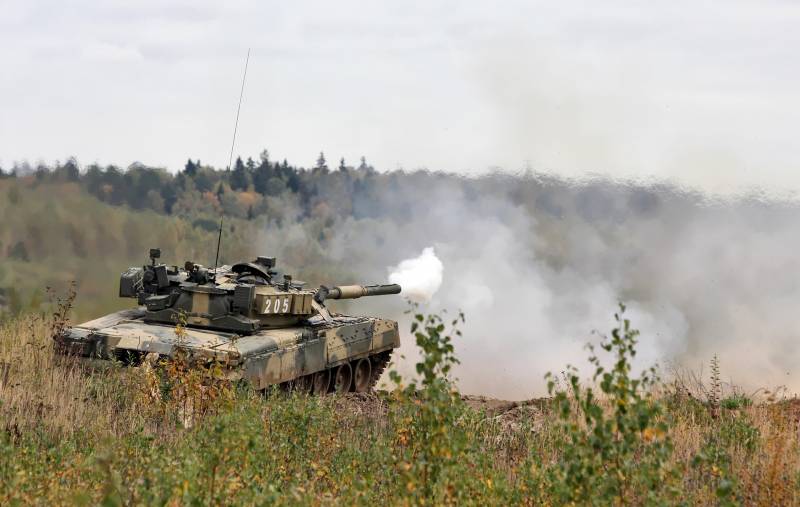Tank T-80U: firing accuracy of the last achievement of the Soviet "defense industry"
The T-80U tank was adopted by the Soviet army back in 1985, but its combat characteristics have not lost their relevance today. This is especially true of its fire control system, which at the time of the collapse of the USSR was considered the most modern of those in mass production. Moreover, it was it that was subsequently equipped with Russian T-90s of the 1992 model, so it would be quite interesting to look at its advantages in comparison with a simpler tank weapon system.
Fire control system T-80U
As you know, the accuracy of a shot from tank guns are influenced by many factors. Among them are the wind, which can shift the flight path of the projectile, atmospheric pressure, range to the target and its speed, own speed, tank roll angle, projectile ballistics features, and so on. Taking into account all these features can significantly increase the chances of successfully defeating the enemy from the first or second shot. During the development of the fire control system (FCS) for the T-80U tank, which received the name "Irtysh" in honor of the river of the same name, these parameters, of course, were taken into account.
The sighting part of the SLA 1A45 "Irtysh" consists of three main components.
The first is the 1G46 gunner's day sight with a laser rangefinder. Through it, the range to the target is measured, as well as the aiming of the gun and the machine gun coaxial with it in daylight conditions. It is also used to control missiles of the Reflex complex, launched through a cannon barrel.
The second is the TPN-4-49 Buran-PA gunner's night sight based on a 2nd generation image intensifier tube with a target detection range of up to one and a half kilometers. "Buran", of course, is not a thermal imager, but one of its features is the ability to work in a passive mode without illumination by an infrared searchlight.
The third is the sighting and observation complex of the commander PNK-4S, based on the combined sight-surveillance device TKN-4S. With the help of it, the tank commander can observe the terrain and fire from a cannon and a coaxial machine gun without getting up from his workplace. Like Buran, TKN-4S at night can operate in active mode with illumination from an infrared illuminator, and in passive mode without illumination.
The fire control system includes a 2E42 tank armament stabilizer, which stabilizes the cannon and coaxial machine gun in the vertical and horizontal planes. Also included are a voltage converter, a block of switches, sensors for roll, linear acceleration, wind, and more.
Data from all sensors, including information about the range to the target, is processed by an electronic ballistic computer, which automatically generates the necessary corrections for firing.
Choice of opponent
As you know, three main battle tanks were in service in the USSR at the same time - T-64, T-72 and T-80 in various modifications. To choose among them an opponent for the T-80U, in principle, was not a big deal. If only it fell under two criteria: the relative "freshness" of the modification and the presence of a simplified sighting system. In this regard, the T-72B is excellent. In fact, he is the same age as the T-80U, but it does not have an automated fire control system.

Test
The comparative tests of these two machines, carried out in the second half of the 80s in Central Asia, cannot be called "greenhouse" ones. If ideal range conditions are often used to identify the maximum technical capabilities of a tank in terms of firing, then here we are talking about the military operation of tanks, during which a large load falls on the crews: long marches before firing, various weather conditions, severe time limits for hitting targets And so on.
The T-72B went first.
During the tests, these tanks fired 348 rounds of armor-piercing sub-caliber shells. Of this number, only 303 turned out to be “recorded”, that is, laid down in the time-to-kill regulations, etc. Of the 303 “recorded” shots, 101 hits on targets were recorded. Accordingly, out of the total number of shots, hits accounted for 29,02%.
T-72B tanks used cumulative shells in the amount of 165 units. Of these, 150 shots turned out to be “recorded”, and 38 hit the targets at all. Of the total number of shots, hits accounted for 23,03%.
The second in line was the T-80U.
During the tests, "Ears" made 249 shots with armor-piercing sub-caliber shells. 229 shots were taken into account, and 99 hit the targets. In this case, the hits had 39,75%.
The T-80U "cumulatives" were shot in the amount of 102 pieces, and 89 turned out to be "recorded" ones. Only 30 pieces hit the targets. That is, out of the total number of shots, hits on targets amounted to 29,41%.
Conclusions
It may seem that the differences of 6–10 percent are not very significant, but in fact they mean that the T-80U, in conditions close to combat, provides a third higher hit rate with sub-caliber shells than the T-72B, and cumulative - by about a quarter. It should be noted here that the T-72B sighting system is far from the level of the T-54/55, which the T-80U could surpass twice. The “seventy-two” has both a laser rangefinder and a ballistic corrector with a set of sensors, but this whole system does not work in automatic mode.
The superiority of automation, of course, is visible to the naked eye. But the human factor cannot be ruled out even in this case. So, the typical mistakes of the crews of the studied tanks were: the wrong choice of the type of projectile on the ballistics scales when loading the gun, incorrect measurement of the range to the target, aiming at the rangefinder mark and, let's say, excessive haste due to time limits for hitting targets.
To date, the T-80U, despite its almost forty years of age, cannot be written off as hopelessly outdated machines. Based on the combination of characteristics, such as high mobility, fairly good armor in combination with dynamic protection, as well as automation of the preparation of a cannon shot, it is quite capable of solving a wide range of tasks in a modern war.
Information sources:
O. N. Georgievsky, N. S. Kurbatov and others. “The influence of the reliability of the weapon system and the qualifications of the tank crew on the frequency of hitting the target”, 1989. Declassified by the expert commission of the FGAOU VO “SPbPU”. Act No. 1 dated 09.06.2020/XNUMX/XNUMX
M. Baryatinsky "All tanks of the USSR." Volume 3
A. S. Efremov, M. V. Pavlov and others.History creation of the first production tank T-80 with a gas turbine power plant"



Information